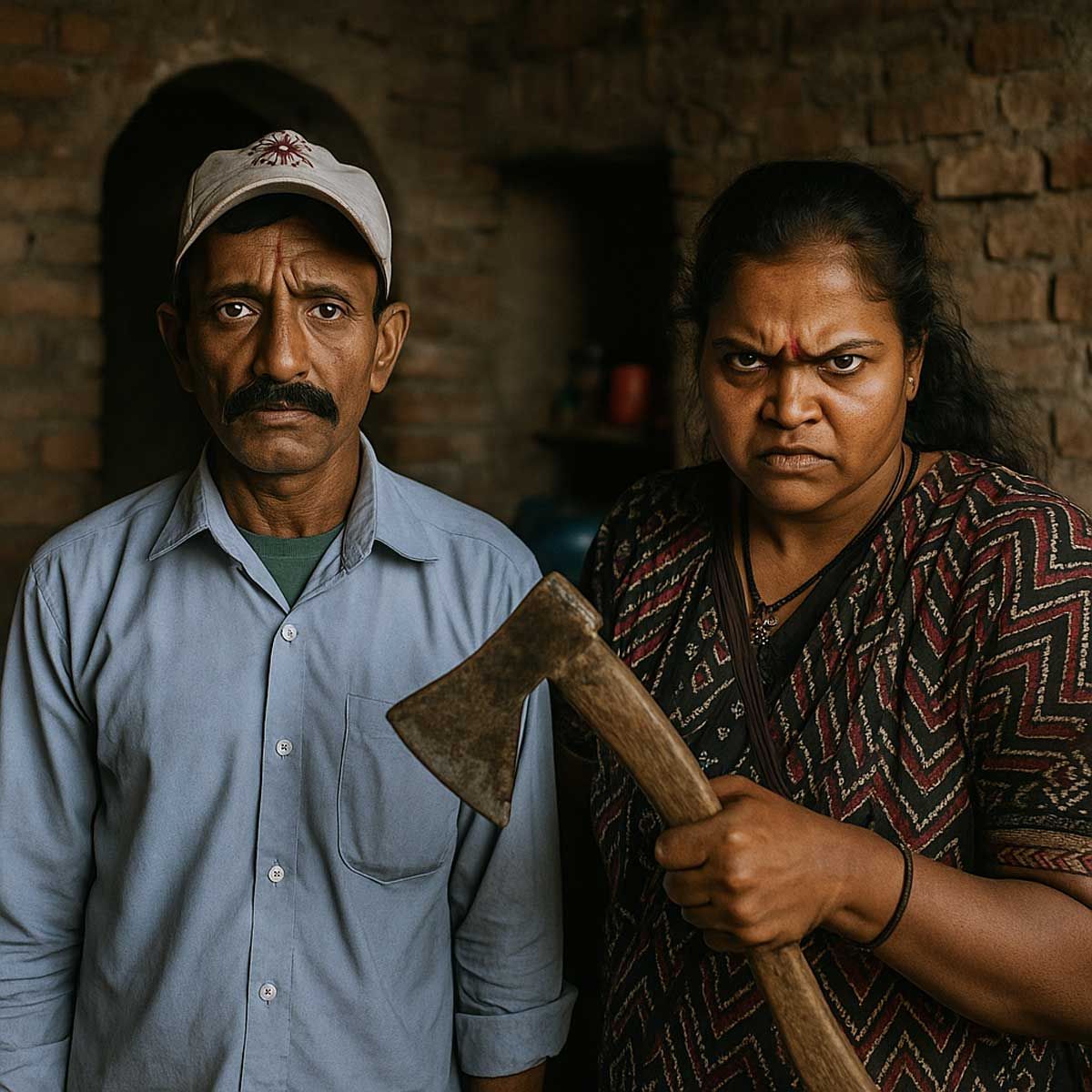More Coverage
Twitter Coverage
Satyaagrah
Written on
Satyaagrah
Written on
Satyaagrah
Written on
Satyaagrah
Written on
Satyaagrah
Written on
JOIN SATYAAGRAH SOCIAL MEDIA
A fascinating legend of the ethereal Indian cotton which led to Rome losing a significant quantity of its wealth to India
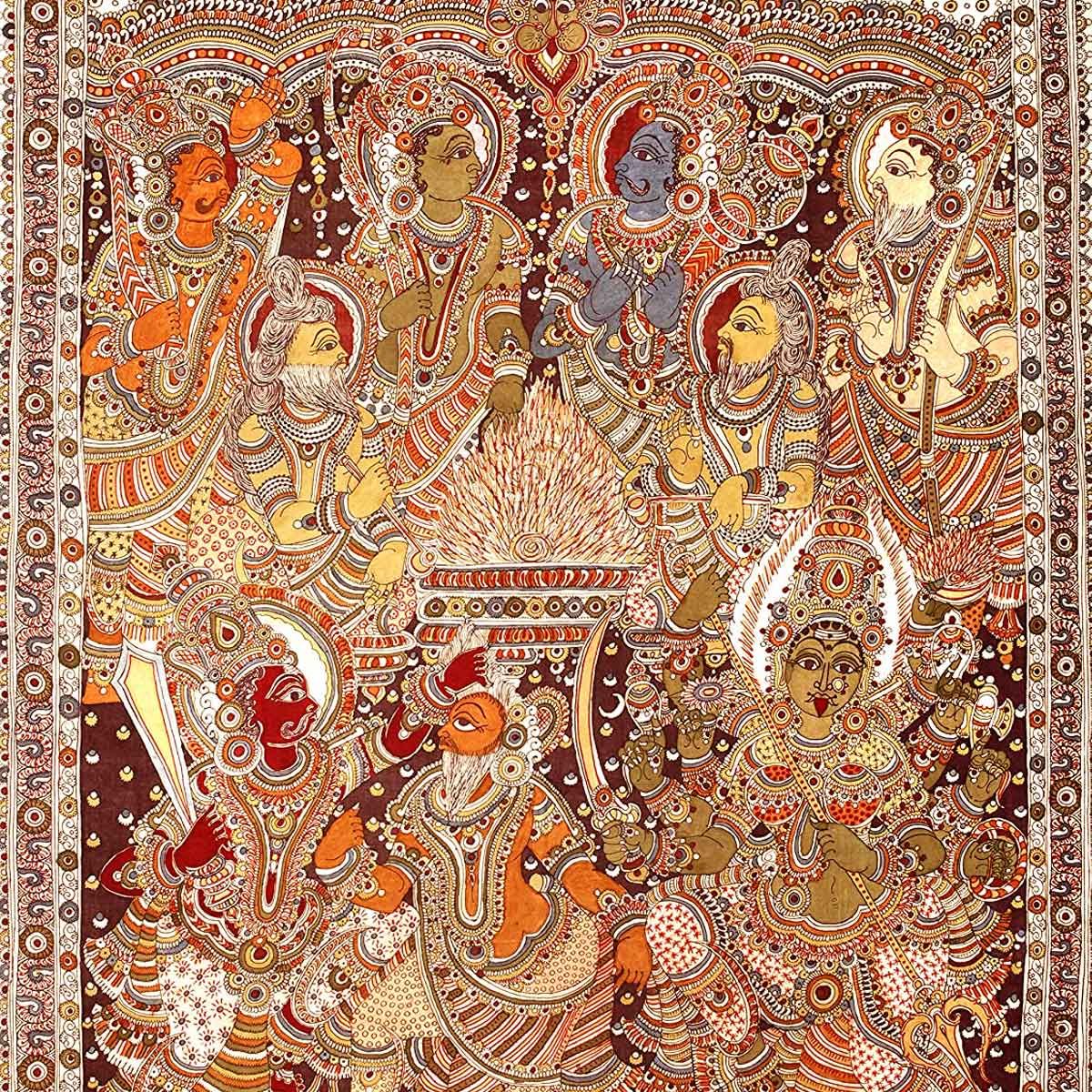
Enter Rome in the 1st Century CE. Millennia ago, the beautiful ladies in Rome were besotted by a certain fabric that reached them from across the seas. Soft to touch, light, and graceful on wearing, the fabric inspired a few drapes and fashion styles among the Roman upper classes.
Today, we know the fabric as the ubiquitous cotton. However, in the 1st century CE, cotton, indigo dyed-fabrics, and other produce from India were in great demand in Rome which gave pearls and gold in exchange. Cicero, the Roman orator, has recounted how 20 million gold coins were sent to India every year to bedeck Roman ladies in Indian clothes.
Even the Greeks were aware about the wonders of Indian cotton.
Herodotus, an ancient Greek historian, mentions Indian cotton in the 5th century BCE as "a wool exceeding in beauty and goodness that of sheep." When Alexander the Great invaded India, his troops started wearing cotton clothes that were more comfortable than their previous woolen ones. Strabo, another Greek historian, mentioned the vividness and the superior quality of Indian fabrics, and Arrian narrated the prosperous Indian–Arab trade of cotton fabrics in 130 CE.
In 400 BCE, the Greek historian, Herodotus wrote in his book Historia: “In India, there are plants that produce sheep’s wool.”
The cotton plant in India was referred to as “wool that grew on plants” for a long time by the Greeks. Pliny the Elder gave it the name “cotton” after the fruit, mala cotonea that grew in Crete.
Due to the popular demand and high quality of Indian cotton, Rome was losing its wealth to India, which over time, led to a decision: the ban of Indian muslin around the 1st century CE. Perhaps it could be the world’s first trade ban.
Even in other parts of Europe between the 1st century BCE and the 1st century CE, the elite classes wanted this unique fabric extensively worn by the common people in India at the same time period.
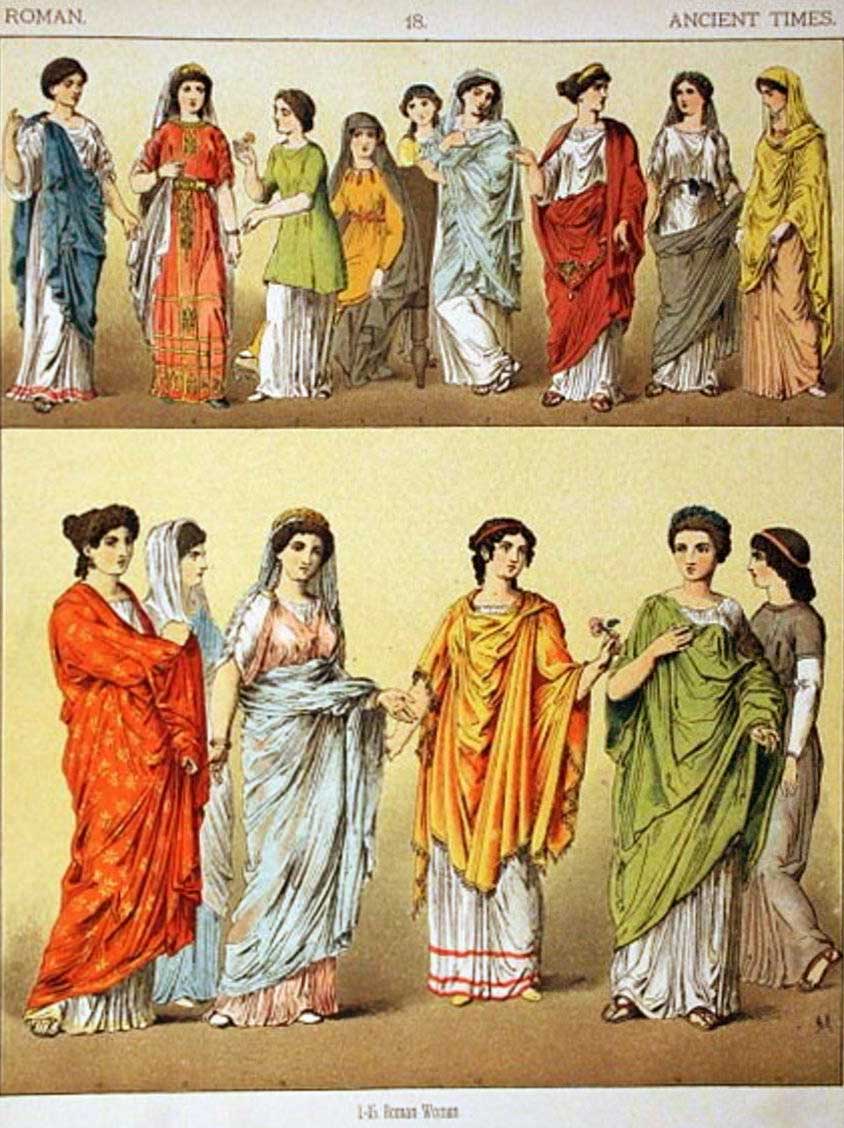 |
The demand for the Indienne (Indian textiles) was so high that several units were set up in Europe to produce an imitation. France, Italy, Netherlands, Spain, Germany - all were swept in the craze of Indienne in the 1500s. Finally, Frederick William I banned Indienne in Marseilles in 1580 CE. The ban was intense with heavy fines imposed on those found guilty of wearing such fabrics. Corporal punishment was also introduced, stocks of garments were destroyed, and the police even ripped off the dresses of offending ladies walking on the streets.
This was very similar to the Swadeshi movement in India during the struggle for freedom from the British. This ban was a European Swadeshi movement of the 1580s.
The present day, gossamer cotton, was famed in ancient Europe. Known as ‘nebulla venti’, the cloth’s softness was equated to woven clouds. Herodotus has marvelled at the fabric’s fineness in his works as well.
Despite all these bans, cotton was one of the major exports in the Dutch East India Company records of 1680. The Dutch exported 1,12,00000 pieces of cotton textiles to their colonies and other parts of Europe for trade in a 5-year-period between 1684 and 1689 CE from the port of Machilipatnam.
Interestingly, India held this monopoly of cotton cultivation, production and trade for over 2,000 years. A forerunner in textiles, India specialized in cotton, associated dyes, prints, waves, machinery and, even, tailoring. India’s long thread of antiquity is amply supported by ancient, medieval, and modern texts.
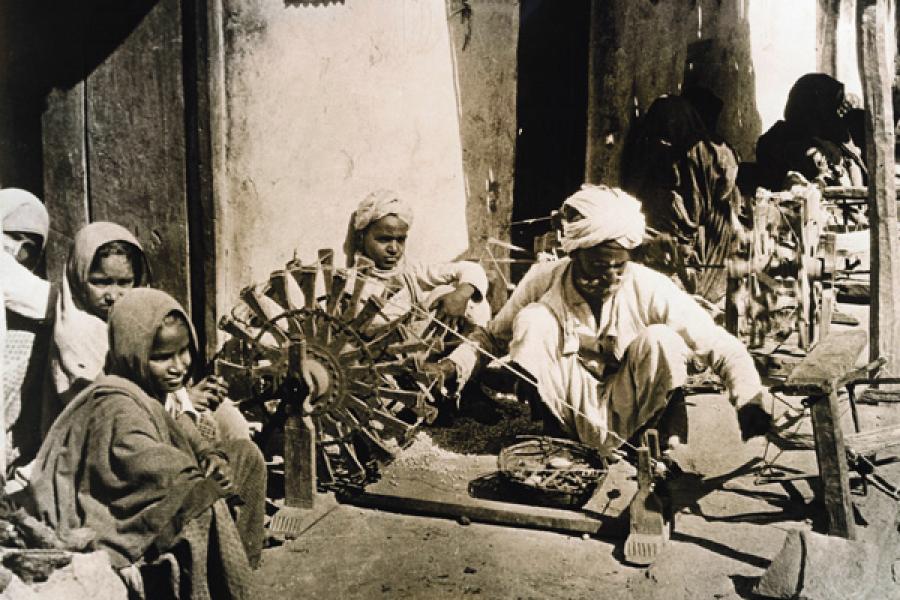 |
For the very first time
The Vedas recognize Rishi Grusthayudha as the first person to grow cotton, stating that he grew cotton plants and drew cotton thread from them. He drew about ten measures from each plant, paving the way for planned quantified harvesting.
Organic substances such as cotton fibers disintegrate in soil, making it difficult to find millennia-old samples of cloth, paper or wood. However, some samples could get mineralized due to tight contact with highly corrosive metals such as copper or iron. Organic material then gets preserved and can tell a timeless story.
One such artifact was found in Mehergarh, Balochistan, part of Bharatavarsha, where fibers of cotton were found mineralized in copper beads by the side of a skeleton’s wrist.
Detailed studies of the same have proven that the fibers are from mature and ripe cotton seeds and were extracted using a refined process. This points to the maturity in the cotton cultivation method in India and fiber extraction 9,000 years ago.
This is the oldest physical sample of cotton in the world, as the sample has been traced to as old as 7th millennium BCE (9,000 years ago)!
There have been other samples of cotton excavated from other sites around the world but these date more towards 3rd and 2nd millennium BCE. A sample of fibers of a woven cotton fabric found at Dhuweila in eastern Jordan, dating to around 4th millennium BCE have also been found. However, the ecological conditions prevalent at that time and location have ruled out its local produce and the sample has been traced back to India.
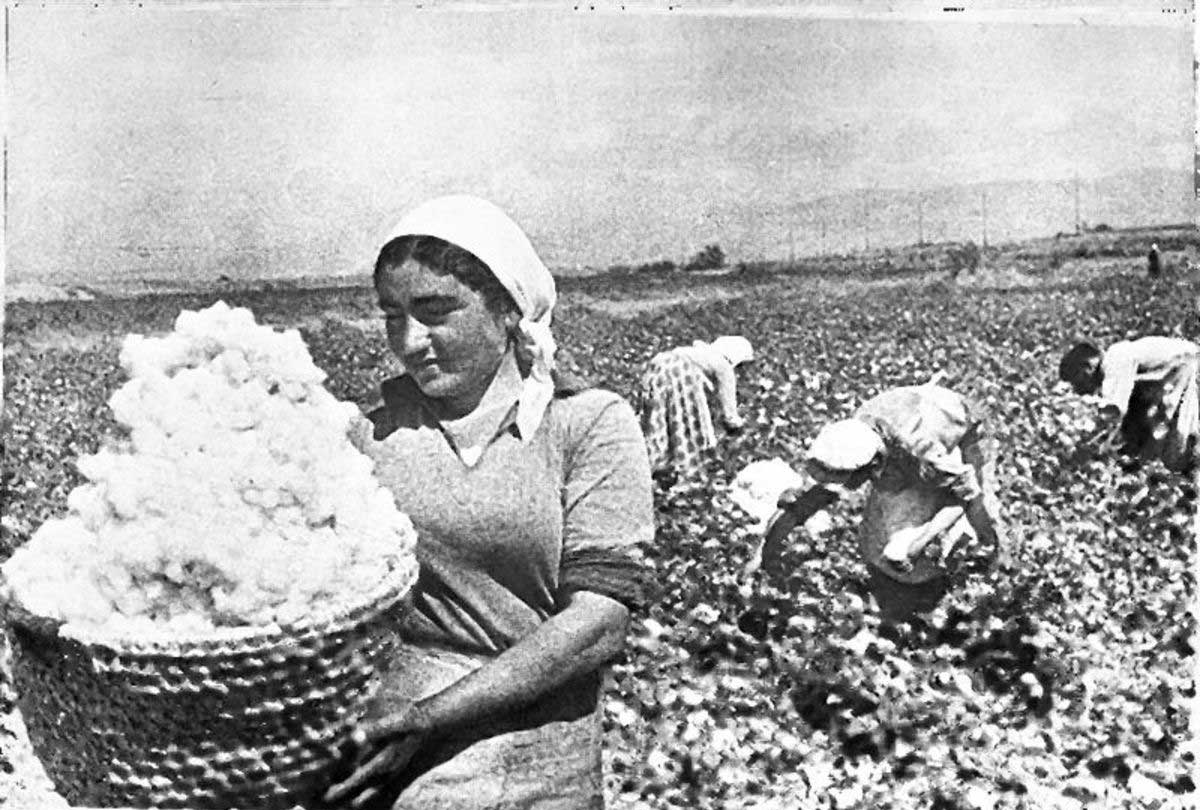 |
The path-breaking discovery led to many more historical implications:
- In the field of agriculture - This region has shown signs of continued cultivation, of agriculture and pastoral farms from 7th millennium BCE.
- Trade - Indians were not only cultivating cotton but were also exporting cotton to Jordan or the West, as early as the 4th millennium BCE or 6000 years ago!
- Technological advancements in metallurgy - Indians knew mining and molding metals such as copper into beads. This mineralized sample of cotton fibers had been roll pressed around a rod and then cut and filed into beads.
More climates, more variety
Cotton plants were widely grown in India. The final product was referred to as karpasa, kapas, pinja, and panju. Each port of India exported the local variety of cotton that grew in its hinterland. India had not only learnt to clothe her people with plant fiber, but had also tweaked them to develop varieties based on local soil and climes to suit different needs and tastes.
For example:
- Jayadhar cotton from Karnataka
- Karunkanni from Tamil Nadu
- Kala cotton from Bhuj
- Ponduru cotton from Andhra region
- Punasa cotton from Rajasthan and
- Fine Comilla cotton from North East India, a cotton so fine that many meters of it could be fitted into a match box.
Muslin comes from Masuli, derived from Masulipatnam. This was the port on the Coromandel Coast from where cotton was exported to Europe and other countries. This port is still a vibrant town in India, now called Machilipatnam.
 Traded Treasures: Indian Textiles for Global Markets |
Influences the world
Indian cotton was sought after in other parts of the world as well.
Such was the overwhelming demand of the exquisite Indian cotton that in other parts of Europe between the 1st century BCE and the 1st century CE, the elite classes and aristocrats wanted this unique fabric desperately, which was extensively worn by the common people in India.
Indian cotton was in extensive demand in places all over the world, from Europe to China, from the Arab world to Japan.
- China: Zhou Qufei or Chou Chu-fei, was a Chinese government official who lived between 1135 and 1189 CE, during the Song dynasty. He wrote the “Ling-wai tai-ta : Sensational information from beyond the ranges” in 1163 CE and referred to the Vengi kingdom. A part of the Chola empire, the Vengi kingdom was popular with the Chinese and the Arabs for textile exports. Vengi, in the present Andhra region, includes the port of Machilipatnam from where textiles and other commodities were exported in large volumes, even during the colonial rule (17th century).
- Morocco: Ibn Batuta, the Moroccan explorer who was en route China, visited India in 1345 CE. At Beypore in Kerala, he was taken in by the soft local cotton fabric and worn as an upper cloth (shali known as selai in Tamil). From shaliyat came the French châle, Spanish chal, Italian scialle, Russian shal, and the English shawl.
- Japan: The country was under the rule of the Tokugawa Shogunate and the country’s 300 regional Daimyo during the Edo period (1603-1868). This period was known for its strict social order, economic growth, flourishing of arts and culture, environmental protection and, at the same time, insulation of Japan from foreigners or a selective foreign policy. During the Edo period, Indian cotton went to Japan as sarasa.
Sarasa had its origins in the early Edo Period (1603 to 1868) when Portuguese seafaring traders introduced cotton calicos or chintz they acquired in India into Japan. These beautiful, exotic chintz textiles quickly became enormously popular among wealthy samurai and merchant classes. Indian calicos presented themselves as unconventional designed cotton fabrics containing vivid colors with striking abstract geometric and animal designs. They stood out in stark contrast to common Japanese utilitarian blue indigo cotton fabrics, a textile the Japanese encountered every day.
Unfortunately, imported Indian calicos were exceedingly expensive for the local populace, too high-priced for making into affordable kimonos and other Japanese fabrics. Instead, the Japanese cut down large lengths of sarasa into smaller sizes in order to create prized and relatively costly small items like tea-caddy bags, wrapping cloths, small money purses and pouches for tea utensils, replacing a previous preference for Chinese silk.
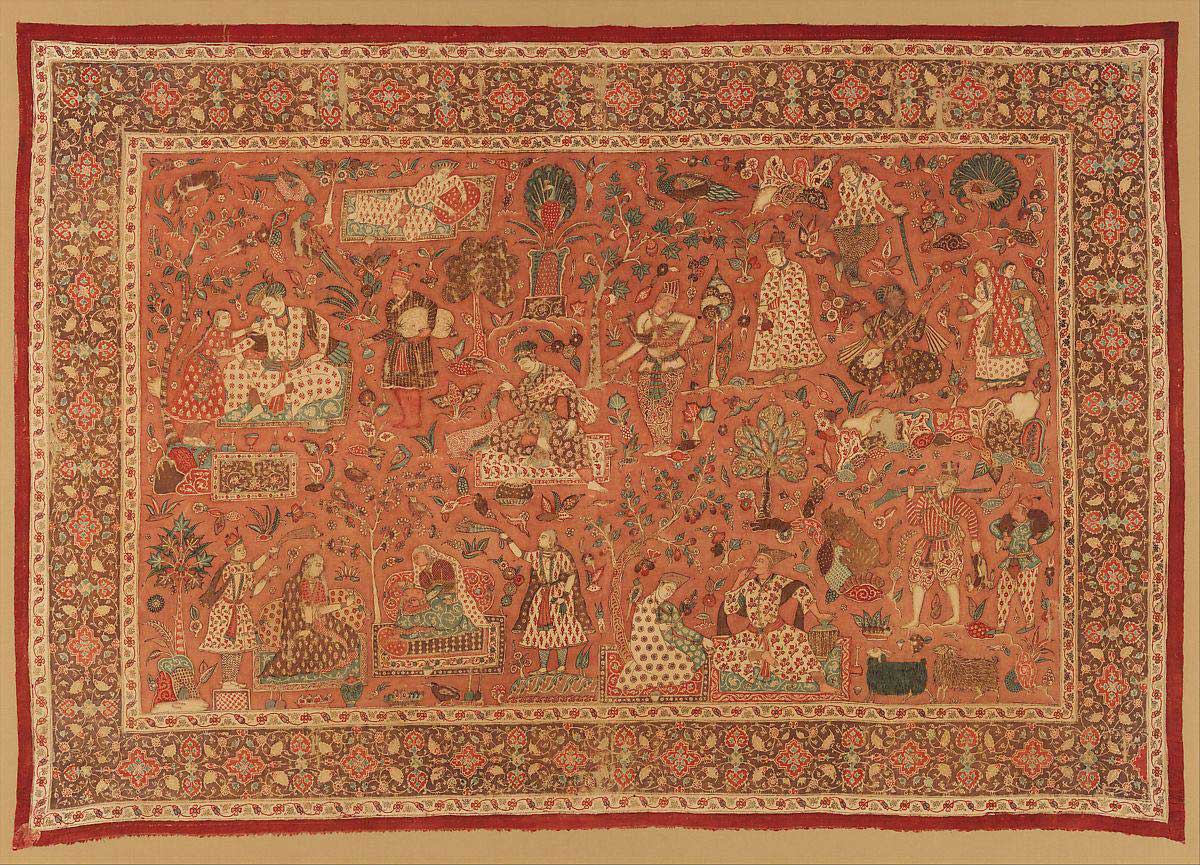 A number of chintz rumals and large summer carpets bear inventory notations written by clerks in the storeroom of the Amber Palace, near Jaipur |
Production of domestic sarasa (calico) began in the late 1600s (Edo Period) when skillful Japanese dye workers found a method to replicate the designs of Indian calicos from their own style and production techniques. Master Japanese textile makers applied their indigenous katazome textile printing skills into making sarasa (rice paste resist dyeing with washi paper stencils "katagami").
The humongous demand for the Indienne (Indian textiles) was so high that several units were set up in Europe to produce an imitation. France, Italy, Netherlands, Spain, Germany - all were swept in the craze of Indienne in the 1500s. Finally, Frederick William I banned Indienne in Marseilles in 1580 CE. The ban was intense with heavy fines imposed on those found guilty of wearing such fabrics. Corporal punishment was also introduced for those who wore Indienne, stocks of garments were destroyed, and the police even ripped off the dresses of offending ladies walking on the streets. This was very similar to the Swadeshi movement in India during the struggle for freedom from the British. This ban was like an European "Swadeshi movement" of the 1580s - which banned and boycotted Indian textiles for monopolizing and dominating their market due to unmaintainable demand (instead of Indians banning European clothes). The astonishing reversal of fortunes may as be one of the most drastic economic collapses in history.
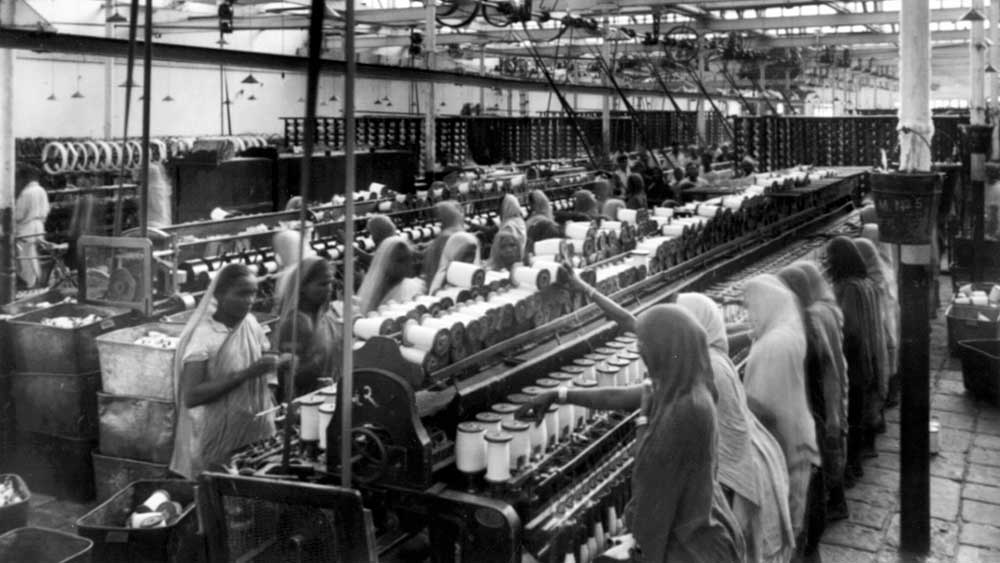 Many of Jamsetji Tata’s nation-building endeavours in steel and power were facilitated by his successes in the textile business. His mills set benchmarks in technology and employee welfare |
The present day, gossamer cotton, was famed in ancient Europe. Known as ‘nebulla venti’, the cloth’s softness was equated to woven clouds. Herodotus has marvelled at the fabric’s fineness in his works as well.
Despite all these bans, cotton was one of the major exports in the Dutch East India Company records of 1680. The Dutch exported 1,12,00000 pieces of cotton textiles to their colonies and other parts of Europe for trade in a 5-year-period between 1684 and 1689 CE from the port of Machilipatnam, since the demand was too high and the quality of cotton was simply irresistible.
Interestingly, India held this monopoly of cotton cultivation, production and trade for over 2,000 years. A forerunner in textiles, India specialized in production of quality cotton, associated dyes, prints, waves, machinery and skillful tailoring. India’s long thread of antiquity is amply supported by ancient texts, archaeological evidence as well as historical accounts.
The glorious past shows us the way for future possibilities, intrepidity, and adventure. It is left to us to pick up the strings before industrialization and modernization severed these strains and strands.
References:
@bharathgyan - Dr. DK Hari and Dr. Hema Hari
rohinisensei.wixsite.com - Rohini Sensei
 Support Us
Support Us
Satyagraha was born from the heart of our land, with an undying aim to unveil the true essence of Bharat. It seeks to illuminate the hidden tales of our valiant freedom fighters and the rich chronicles that haven't yet sung their complete melody in the mainstream.
While platforms like NDTV and 'The Wire' effortlessly garner funds under the banner of safeguarding democracy, we at Satyagraha walk a different path. Our strength and resonance come from you. In this journey to weave a stronger Bharat, every little contribution amplifies our voice. Let's come together, contribute as you can, and champion the true spirit of our nation.
 |  |  |
| ICICI Bank of Satyaagrah | Razorpay Bank of Satyaagrah | PayPal Bank of Satyaagrah - For International Payments |
If all above doesn't work, then try the LINK below:
Please share the article on other platforms
DISCLAIMER: The author is solely responsible for the views expressed in this article. The author carries the responsibility for citing and/or licensing of images utilized within the text. The website also frequently uses non-commercial images for representational purposes only in line with the article. We are not responsible for the authenticity of such images. If some images have a copyright issue, we request the person/entity to contact us at This email address is being protected from spambots. You need JavaScript enabled to view it. and we will take the necessary actions to resolve the issue.
Related Articles
- We also have views on other people's human rights, particularly when it pertains to our community," Jaishankar retorted in one of the strongest repudiation of the constant American lectures on human rights
- The biggest ever single-day market value wipeout caused a loss of $31 billion to Mark Zuckerberg: Mukesh Ambani, and Gautam Adani now richer than the Facebook founder
- Modi govt announces incentive scheme for RuPay and BHIM-UPI after Visa complained to US govt about Indian govt promoting RuPay
- A major boost to India’s defence system, the Philippines has accepted BrahMos Aerospace Pvt Ltd’s proposal worth USD 374.9 million: India’s proposal to supply Brahmos anti-ship Missile System gets green signal
- "New dynamism in ties": In Jakarta, PM Modi calls for a new rules-based order in the post-Covid era, emphasizing the critical role of the ASEAN-India partnership in shaping the resurgence of Asia in the 21st century and fostering global growth
- "In unity there is strength; in partnership, there's power": India-UAE economic alliance marks turning point in their shared history, CEPA to boost trade, stimulate investments & fortify economies, advancing both nations towards mutual growth & prosperity
- PM Narendra Modi during his talk with US President Joe Biden offered to supply food stock to the world if the WTO agrees: Food stock in different parts of the world is dwindling due to the war (in Ukraine)
- George Soros’s Open Society Foundation-funded Institute Peace Research Institute Oslo (PRIO) names Open Society functionary Harsh Mander in unofficial shortlist for Nobel prize
- In a bold stride towards unprecedented growth, India and Saudi Arabia set sights on a staggering $200 billion trade target, heralding a new age of economic partnership and space collaboration, cementing bonds and fostering mutual prosperity
- “Resurgence above all odds being proud of it is a leadership symbol”: Driven by the impressive surge in Adani Group shares, India's stock market witnessed a remarkable rebound, reclaiming position as world's fifth-largest stock market surpassing France
- "Our energy purchases from Russia for the month would be less then what Europe does in an afternoon. I Prefer To Do, Articulate It My Way": EAM S Jaishankar on India's stance over Ukraine war and Russian energy imports
- "We should keep on going along the path of globalization. Globalization is good... when trade stops, war comes": India-UAE to carry out bilateral trade in their national currencies, will help two-way trade reach $100 billion mark in more than five years
- The Balliol college at the University of Oxford has dedicated a new building after Dr. Lakshman Sarup, the first candidate at Oxford to pass his thesis for a Doctorate of Philosophy (DPhil) degree on Sanskrit treatise on etymology
- Giant hypocrite: Activist confronts Twitter CEO over censorship, asks why he ‘hates Jews and Conservatives’
- Meta's Facebook launches its First Standalone Asian Office at CyberHub in Gurugram















